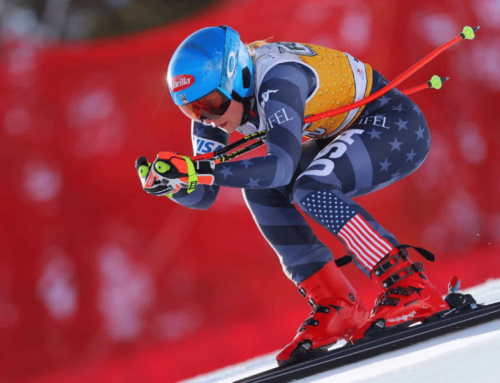Canadian team doctor shows behind-the-scenes look at wild World Cup season
People from across the world are eternally indebted to health workers on the frontlines. This is universally accepted. It’s been a grind of epic proportions over the past 12 months.
Team support staff were also challenged with an ever-changing set of rules, risks and situational dangers like no other ski racing season in history. And that’s not even including the usual tasks of athlete preparation, injury management, performance advantages, nutrition, psychological support, conditioning, etc.
It’s true what they say that it takes a team to win a medal, even if it’s just one ski racer that crosses the finish line.
For Dr. Marcia Clark, an orthopaedic surgeon at the University of Calgary and an Alpine Canada team doctor, it was her “privilege” to spend nearly two months with the Canadian ski team in Europe giving us a behind-the-scenes look at ski racing at the elite level during this bizarre season.
Perhaps there were times when the former NCAA racer (University of New Mexico, 1996 grad) was questioning her decision when she was logging her first of many mandatory isolation routines in a foreign land, with an abundance of medical equipment in tow.
The streets of the normally-vibrant European villages were all empty. Even though COVID regulations were different region by region, the one constant was the ghost town effect, everywhere. No shops, no souvenirs, no socializing in any form. Site seeing was best done early in the morning before anyone was awake.
“The towns are so quiet and the only people you see are the locals who walk daily, and of course the circuit of athletes and support staff,” Clark said, from her home in Calgary nearing the end of another 14-day quarantine.
Dr. Clark hit the circuit starting with the men’s speed team, first in Wengen then to Adelboden, Flachau, Kitzbuhel, Tarvisio, Folgario, Kranska Gora, and eventually to the world alpine ski championships in Cortina. Her role varied, from helping shoot video, administering PPE procedures, moving gates, driving athletes around, reporting times … and the ever-changing administrative duties.
Moving targets
“Every country and local health authority had its own COVID regulations and rules which made it really challenging,” she explained. “Often, when we find that our training or racing plans would have to adapt and we would have to move on short notice. We would liaise with our operations manager in Canada, check local COVID websites and ensure appropriate tests and paperwork were completed. For example to travel into Austria, we needed an invitation letter from the Race Organizing Committee, an Austrian government waiver to enter the country and proof of a negative PCR test within the past 72 hours.”
At the conclusion of her eight-week journey with the Canadian ski teams, including the ski cross team, Dr. Clark reflected on her role as a “follower”, where most decisions and leadership comes from the head coaches.
“I am a volunteer with a skillset that is not needed very often – thank goodness,” she said. “The environment of the team is kind of like an operating room environment, where all have to work together to support each other.”
“Learning the tacit social rules of the group takes time such as where to stand in the start or finish so as not to be intrusive to the team functioning. Who to sit with at dinner and rotating that choice. The athletes are not looking for new friends and leaving them to their routine and focus is important.”
For Dr. Clark, who is now immersed back into her real life, she reflects on the value of her ski racing past and how it shapes her approach to life.
“Ski racing helped me learn to set goals, achieve those goals, learn from failure, and gain confidence in myself and abilities” she said.
“I was once told that I shouldn’t be an orthopaedic surgeon because of the strength needed and the tools I would have to use. Skiing helped with giving me strength – both physical and mental – and when I think of all the bindings I put on, how much ski tuning I did … I knew I would prove those naysayers wrong.”
































